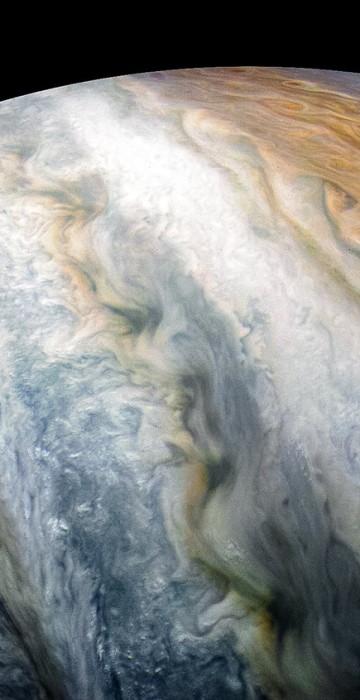
In Focus
Year in Space Pictures: 2018
Expand your perspective with these 31 stellar photos from our last trip around the sun.
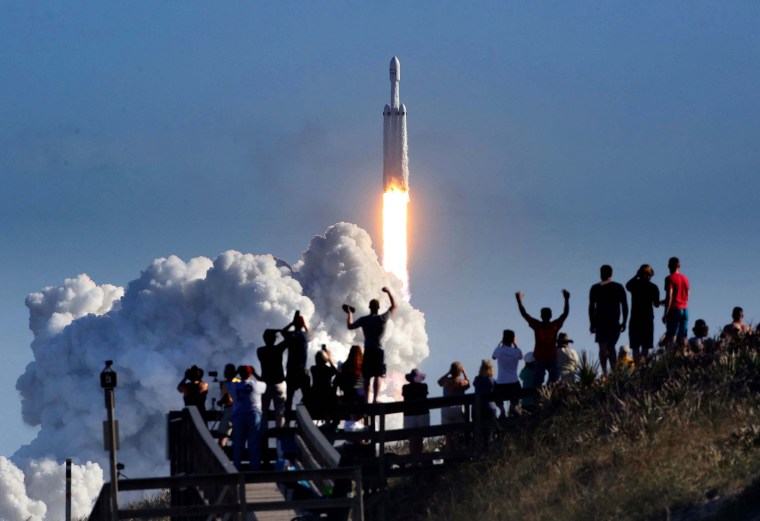
Blastoff!
The crowd cheers at Playalinda Beach just north of the Kennedy Space Center during the succesful launch of the SpaceX Falcon Heavy rocket on Feb. 6.
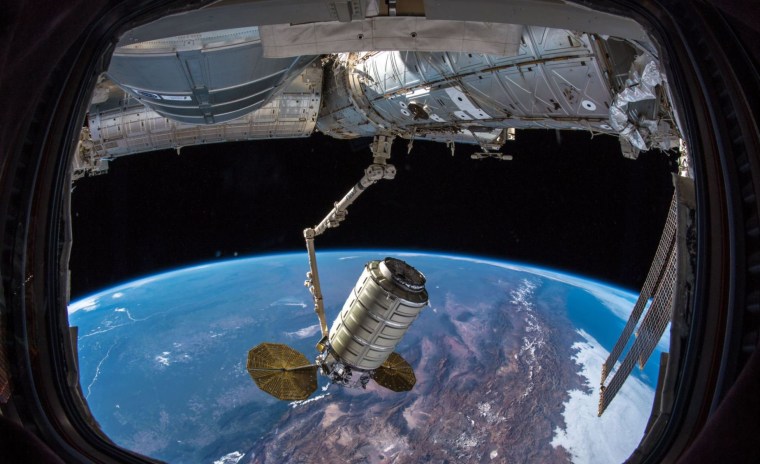
Nice catch!
NASA astronaut Serena Auñón-Chancellor shared this photo of the robotic Cygnus cargo ship arriving at the International Space Station on Nov. 19. Auñón-Chancellor and her crewmate, Alexander Gerst of the European Space Agency, used the space station's robotic arm to capture the cargo craft and dock it to the orbiting outpost.
"Proud to have The SS John Young on-board!" Auñón-Chancellor tweeted.
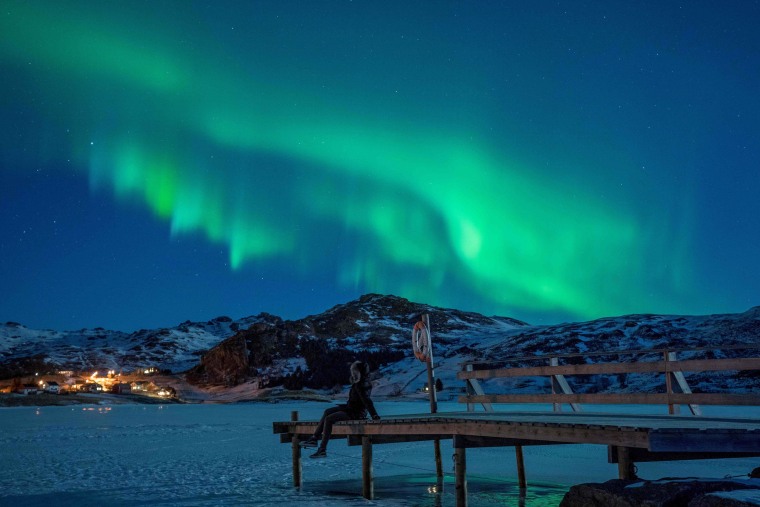

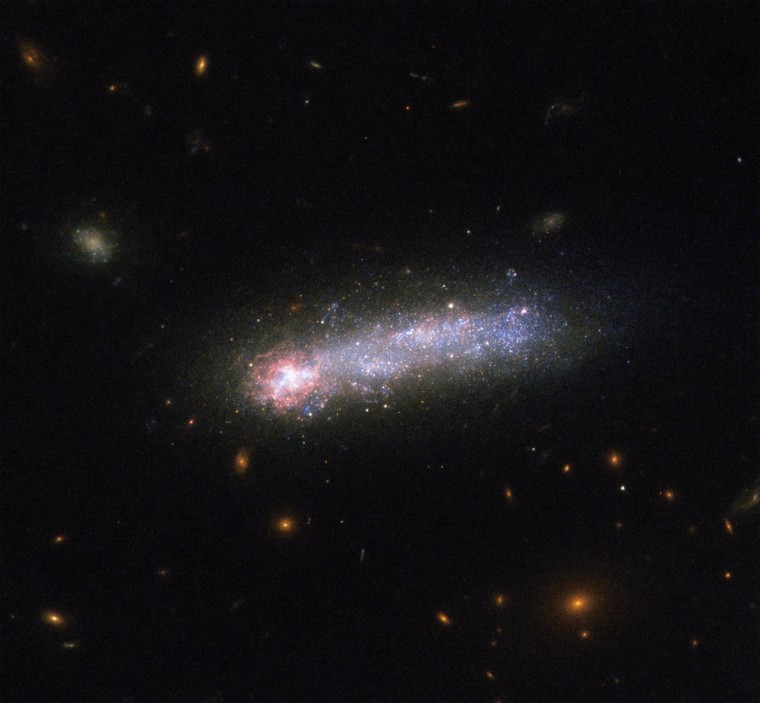
Tadpole galaxy
A firestorm of star birth lights up one end of the diminutive galaxy LEDA 36252, also known as Kiso 5649, in this Hubble Space Telescope image released on Jan. 2.
The galaxy is a member of a class of galaxies called "tadpoles" because of their bright heads and elongated tails. This galaxy resides relatively nearby, at a distance of 80 million light-years.

Jupiter's colorful clouds
Swirling cloud belts dominate Jupiter's southern hemisphere in this image captured by NASA's Juno spacecraft during its tenth close flyby of Jupiter. The spacecraft was about 8,500 miles from the tops of the clouds of the planet when the image was captured.
JunoCam's raw images are available to the public, and citizen scientists have been doing amazing work processing JunoCam images since Juno's arrival at the giant planet in July 2016. Citizen scientist Kevin M. Gill processed this image, which was released on Jan. 12.


Madagascar bleeds
NASA astronaut Ricky Arnold posted this image on July 11 from the space station of the Betsiboka Estuary on the northwest coast of Madagascar.
The estuary is the mouth of Madagascar’s largest river and one of the world’s fast-changing coastlines. "The heart of Madagascar drains into the sea due to decimation of rainforests and coastal mangroves," wrote Arnold.

Starry night
The Milky Way glows in the sky over a geologic formation known as Monument Rocks in Gove County, Kansas. The Milky Way is best viewed on moonless summer nights, far from the light pollution created by cities and towns.
Astronomers believe our galaxy contains about 200 billion stars.
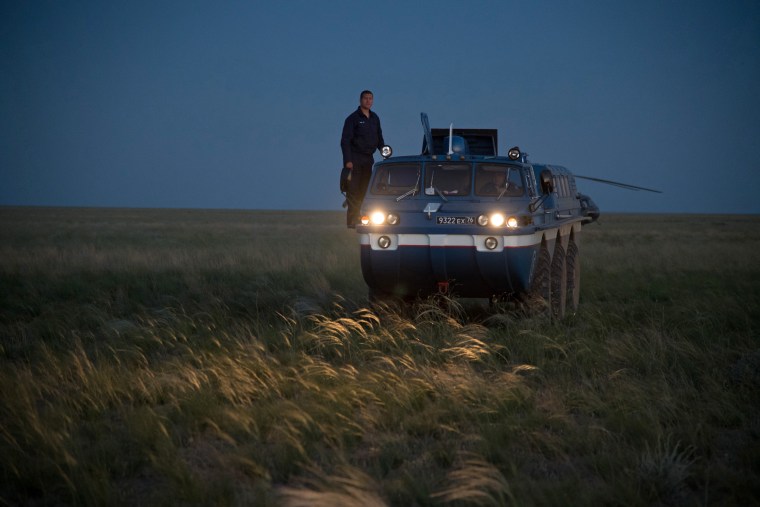
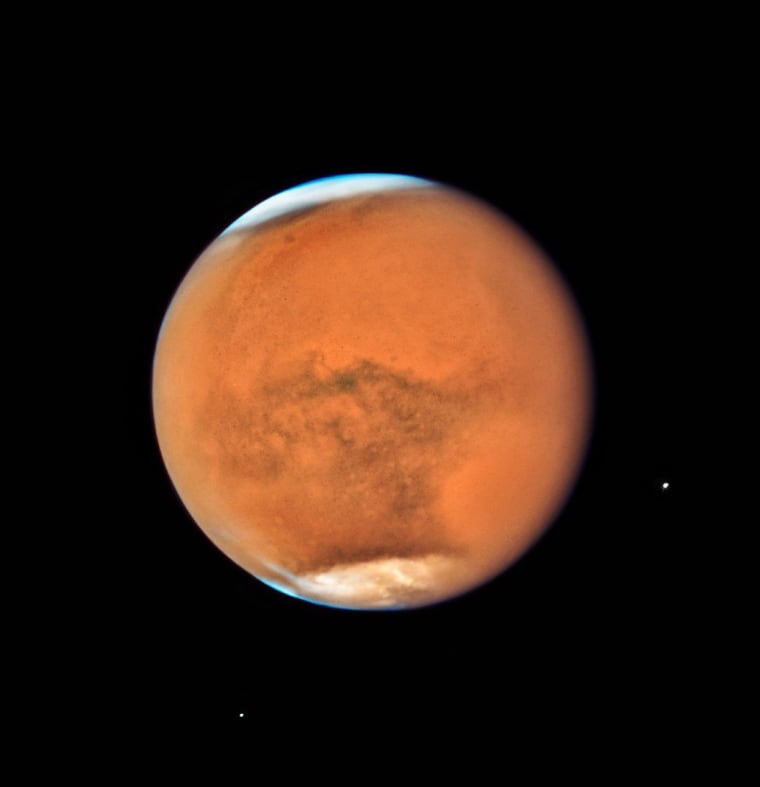
Shrouded in dust
A gigantic sandstorm enshrouds Mars in this image captured by Hubble in mid-July.
Each Martian year, large dust storms cover continent-sized areas and last for weeks at a time. This long-lasting storm plunged the planet's surface into perpetual darkness.
The two small moons of Mars, Phobos (right) and Deimos, appear in the lower half of the image.
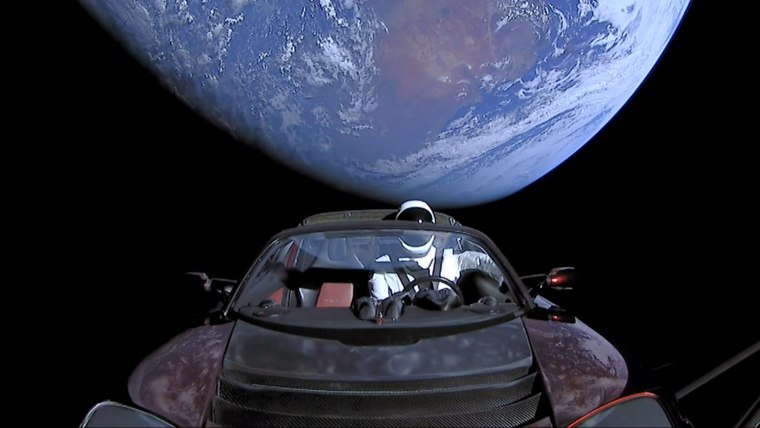
Starman's road trip begins
"Starman," a spacesuit-wearing mannequin, rides into space in a Tesla roadster after launching aboard a SpaceX Falcon Heavy rocket on Feb. 6.
Starman is in an elliptical orbit around the sun, with an estimated top speed of 7 miles per second.

Search for alien worlds
A SpaceX Falcon 9 rocket blasts off from Cape Canaveral Air Station on April 18.
The rocket delivered NASA's new planet-hunting satellite into orbit on a two-year mission to scour nearby star systems for alien worlds that might harbor life.
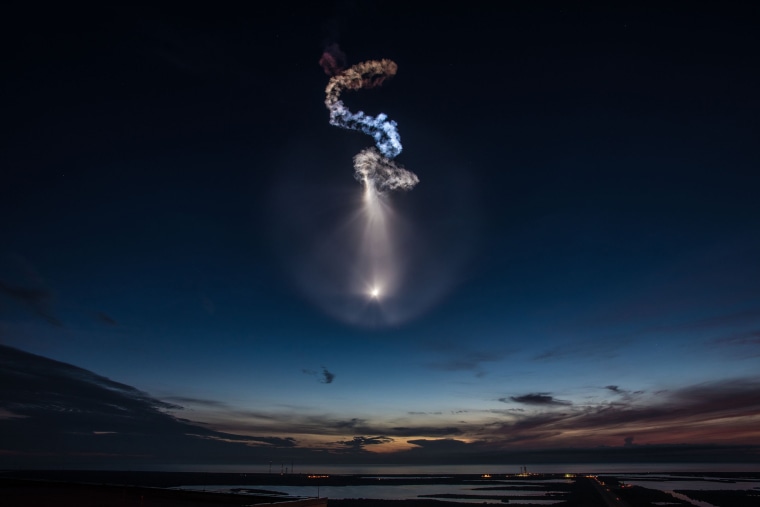

Sunset recovery
The USS John P. Murtha retrieves a prototype of NASA's Orion capsule from the Pacific Ocean on Nov. 1.
It was one in a series of tests that the space agency's Exploration Ground Systems Recovery Team, along with the U.S. Navy, are conducting to practice fetching the Orion spacecraft after it splashes down following deep-space exploration missions.


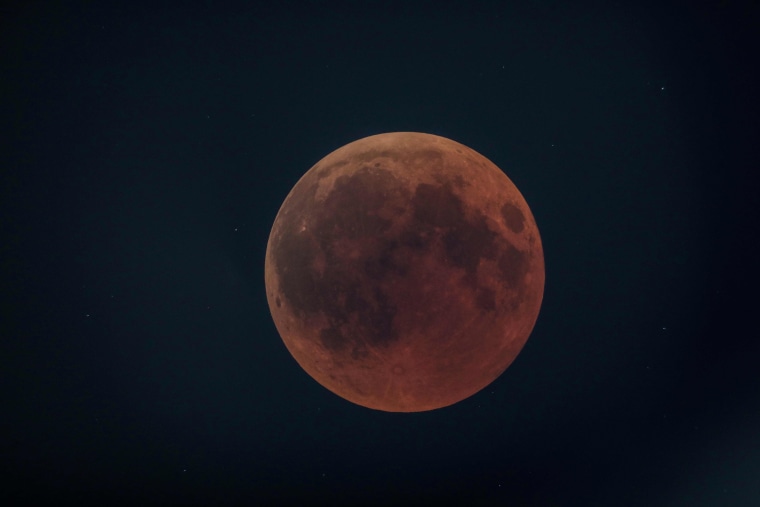
"Blood moon"
The moon is bathed in red during the lunar eclipse on July 27 as seen from Magadi, Kenya.
During totality, when the moon is completely engulfed in Earth's shadow, it takes on bright red and orange hues and is called a "blood moon."
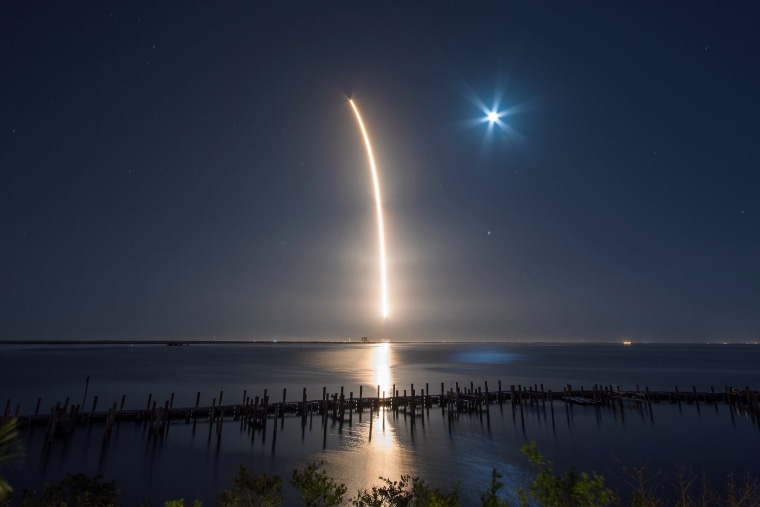
Rocket's path
A SpaceX rocket launches from Cape Canaveral in Florida on March 6, successfully deploying a Hispasat 30W-6 satellite approximately 33 minutes after launch. SpaceX did not attempt to land Falcon 9's first stage after launch due to unfavorable weather conditions in the recovery area off the Atlantic Coast.
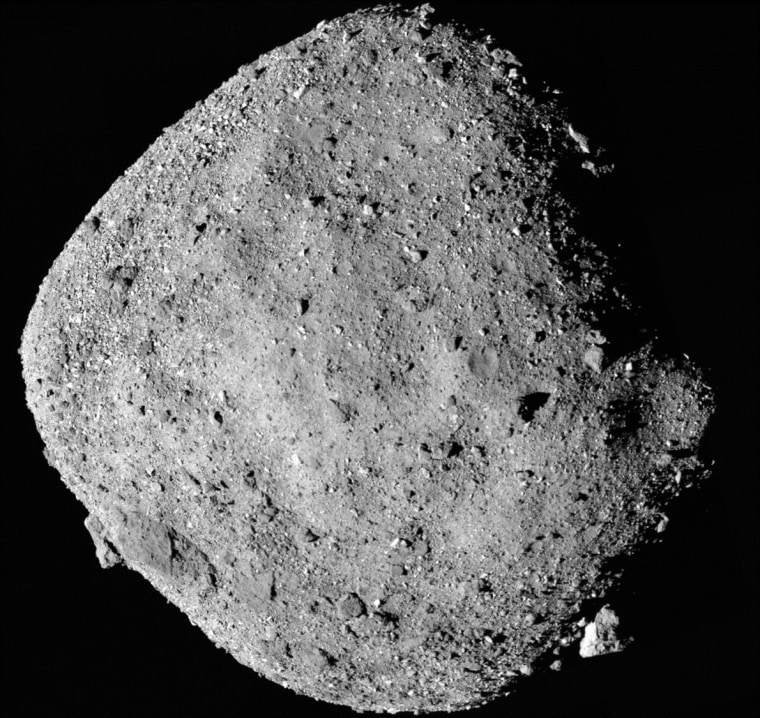
Rendezvous with an asteroid
Between mid-August and early December, the OSIRIS-REx spacecraft traveled 1.4 million miles on its journey from Earth to arrive at a location 12 miles from asteroid Bennu on Dec. 3.
The spacecraft — a roughly cube-shape craft about eight feet on each side — will spend about a year surveying and mapping Bennu.
This mosaic is composed of 12 images collected on Dec. 2 from a range of 15 miles.

Saturn's dancing aurora
An aurora creates a blue ring around Saturn's north pole in a photo released on Aug. 30 by the European Space Agency.
The auroras on Saturn are only visible in the ultraviolet part of the electromagnetic spectrum, which is blocked by Earth's atmosphere, so astronomers have to rely on space telescopes like the Hubble Space Telescope to study them.
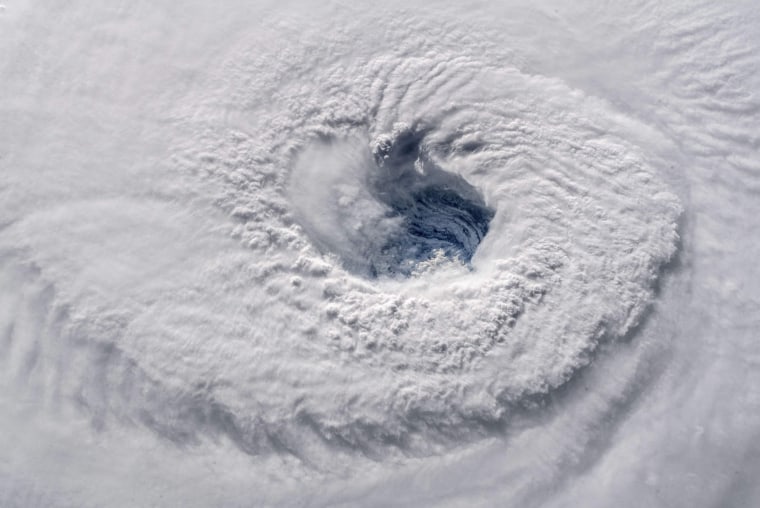
Florence's eye
A high-definition camera outside the International Space Station captured this view of the eye of Hurricane Florence on Sept. 12 as Florence churned across the Atlantic.
Long before Florence started grinding its way across the Carolinas, weather satellites were peering down from space to capture detailed images of the storm and to help meteorologists track its path and intensity.
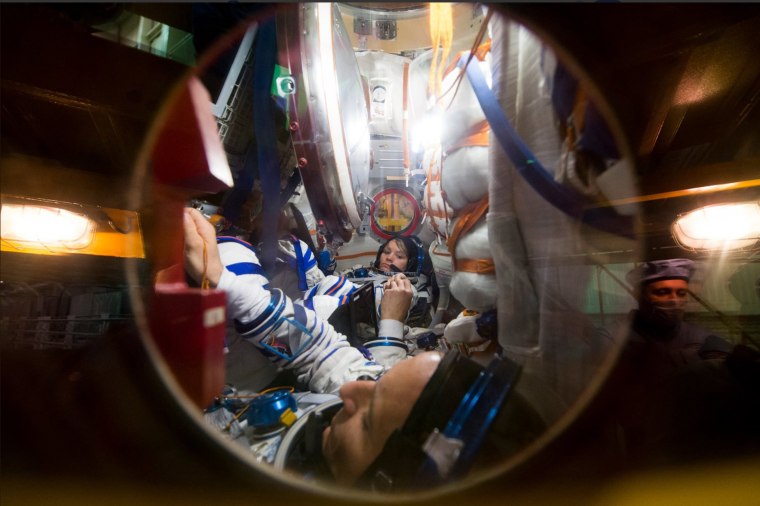
Countdown to launch
NASA astronaut Anne McClain, Canadian astronaut David Saint-Jacques and Russian cosmonaut Oleg Kononenko complete final training exercises ahead of their launch to the International Space Station on Dec. 3.
"Final exams are complete and Expedition 58/59 crew members are preparing to visit their new home for the next 6 months," NASA tweeted, along with the photo, on Nov. 30.
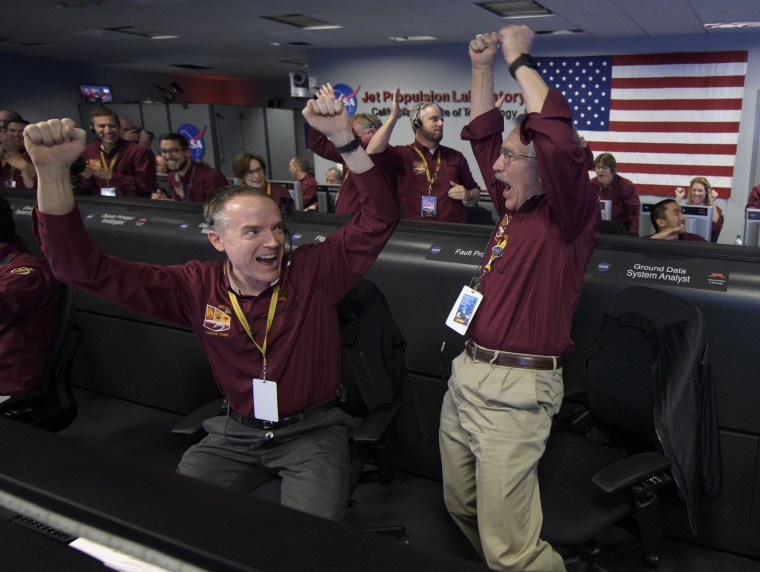
Touchdown!
Members of NASA's Mars InSight landing team celebrate after receiving confirmation that the spacecraft successfully touched down on the surface of the Red Planet on Nov. 26. InSight has now begun a two-year mission to study the deep interior of Mars.
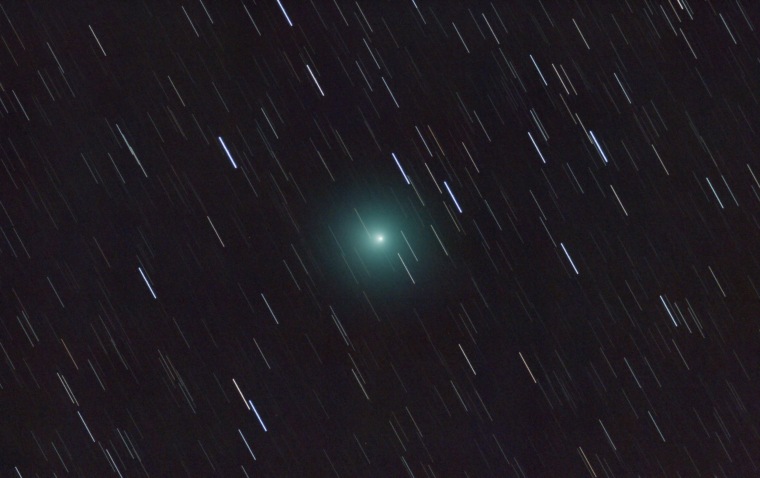
"Christmas comet"
Comet 46P/Wirtanen crosses our skies in this image released Dec. 17.
First observed more than 70 years ago, the comet returned for one of its periodic visits — and this flyby of the "Christmas comet" was one of the closest in recent history.
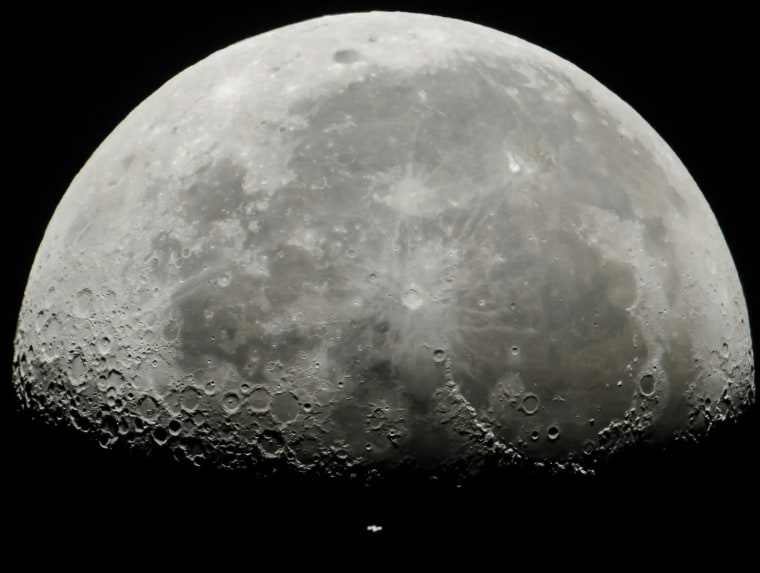
Space station speck
The space station is visible as a tiny white shape at the bottom of the frame as it passes in front of the moon on July 5, as photographed from Salgotarjan, Hungary, on July 5.
An international crew of six is currently living and working aboard the orbiting outpost.
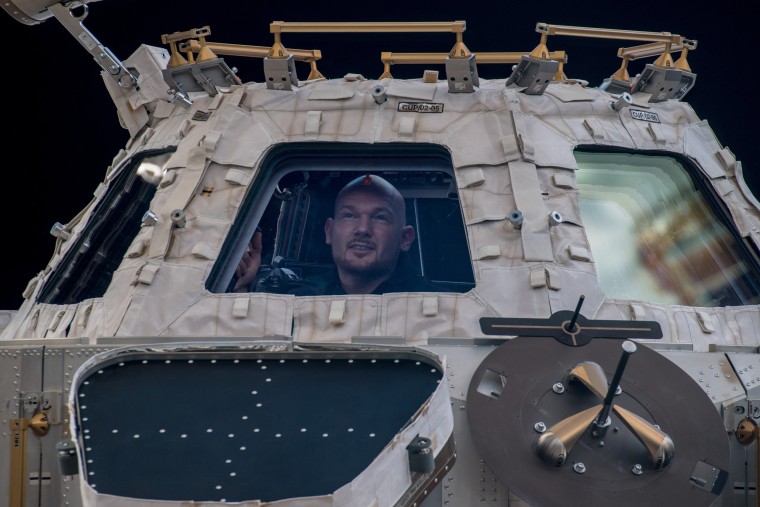
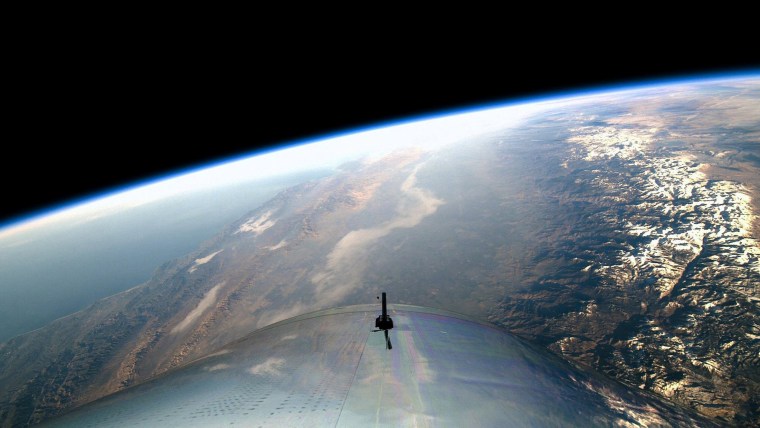
Edge of space
Virgin Galactic's SpaceShipTwo captured this view during a test flight over Mojave, California, on Dec. 13.
The spaceplane reached an altitude of more than 270,000 feet — past the 50-mile mark the U.S. government uses to define the edge of space.

Snowy return
A search and rescue team approaches the Soyuz MS-09 capsule carrying the space station crew of astronauts Serena Auñón-Chancellor of NASA, Alexander Gerst of Germany and cosmonaut Sergey Prokopyev after its landing in a remote area of Kazakhstan on Dec. 20.
The trio spent 197 days in space. It was the first mission for Auñón-Chancellor and Prokopyev, while Gerst flew his second to a total of 362 days in orbit, setting the ESA's flight duration record.
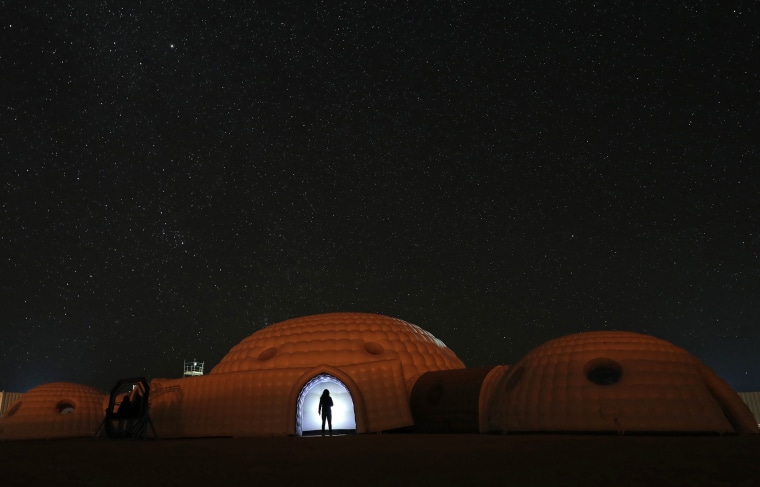
Martian habitat
A member of the AMADEE-18 Mars simulation mission stands in the doorway of a habitat in Oman's Dhofar desert on Feb. 7.
Hoping to pave the way for future Mars missions, the Austrian Space Forum brought more than 200 scientists from 25 nations to the desert near the borders of Yemen and Saudi Arabia for four weeks of experiments and field testing in Mars-like conditions.